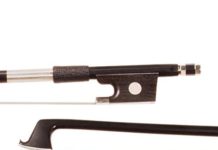From Bach’s Cello Suites to Dvorak’s Cello Concerto, the cello has without a doubt some of the most beautiful music ever written. Here is our top 10.
Six Cello Suites – J.S. Bach
Bach composed these suites between 1717 and 1723 when we worked as a Kapellmeister in Köthen. The only manuscript found was by the hand of Anna Magdalena. The music was brought back to light by Pablo Casals and it’s now considered a must-have in any cellist’s repertoire. Because of the little notation left on the music, you can listen to different versions of the cello suite and be impressed by all of them.
Cello Concerto in b minor – Antonin Dvořák
This was the last solo concerto he composed. It was written between 1894 and 1895 for his friend Hanuš Wihan, however, it was premiered by cellist Leo Stern. Dvořák wasn’t a fan of the cello as a soloist instrument. He complained that the high register was too nasal and the lower one was a not potent enough. Eventually, he gave in and composed what is recognized today as the king of cello concertos.
Cello Concerto in e minor – Edward Elgar
This concerto was the last notable work of the composer. He wrote it in 1919 after World War I, when going to concerts wasn’t that popular anymore. The premiere didn’t receive positive remarks and was left almost forgotten until the 1960s when cellist Jaqueline Du Pré recorded it. It has since become a cornerstone of the cello repertoire.
Variations on a Rococo Theme Op. 33 – Pyotr Ilyich Tchaikovsky
This was the closest to a concerto Tchaikovsky ever wrote for the cello. The theme of the variations is not originally from the Rococo Period, but an original theme in the Rococo style. It was premiered in 1877 by German cellist Wilhelm Fitzenhagen in Moscow.
Cello Concerto in a minor – Camille Saint-Saëns
The concerto was written for the Belgian cellist Auguste Tolbecque in 1872. This is the only cello concerto that doesn’t follow the three movements norm. Instead, it’s one continuous movement with three distinct sections: Allegro non troppo, Allegretto con moto, and Tempo primo.
Sonata in a minor – Franz Schubert
This sonata was originally composed in 1824 for the arpeggione. It had been written for virtuoso Vincenz Schuster, however, but the time it was published posthumously in 1871, the instrument was no longer popular and so the instrument had vanished. Now it’s usually played by cello and piano, or viola and piano.
The Swan – Camille Saint-Saëns
Also known as Le Cygne, it is the 13th movement of The Carnival of the Animals. It is actually the only movement that the composer allowed to be played in public while he was still alive. He thought the other movements were too frivolous and did not want to damage his reputation as a composer. Even though this was originally composed for the cello, the melody is so popular it has been adapted for many different instruments.
Élégie – Gabriel Fauré
This is one of the most played short pieces in the cello repertoire. Fauré composed it in 1880 originally for cello and piano, but later on, he was asked to orchestrate it. He agreed to this and it was premiered with Pablo Casals on the cello and Fauré as the conductor. It is believed that this is the slow movement of a cello sonata that he never finished.
Concert for Two Cellos in g minor – Antonio Vivaldi
This was the only double concerto Vivaldi wrote for cellos, even though he composed about 25 cello concertos. It is very likely he wrote it in the 1720s for the all-girl orchestra at the Ospedale della Pietà, where he worked as music master for about 4 decades of his life.
Hungarian Rhapsody – David Popper
This piece among others Popper composed is known to be the Paganini of the cello. Even though Popper is mostly known just by cellists, his music is demanding, challenging and requires a level of virtuosity. Luckily, he also wrote The High School of the Violoncello – the bible for any cellist who wants to excel at being a virtuoso.
There are many more cello pieces that are just as beautiful, but these are only a few of our favorites! What’s your favorite cello piece? Share with us!
Table of Contents






